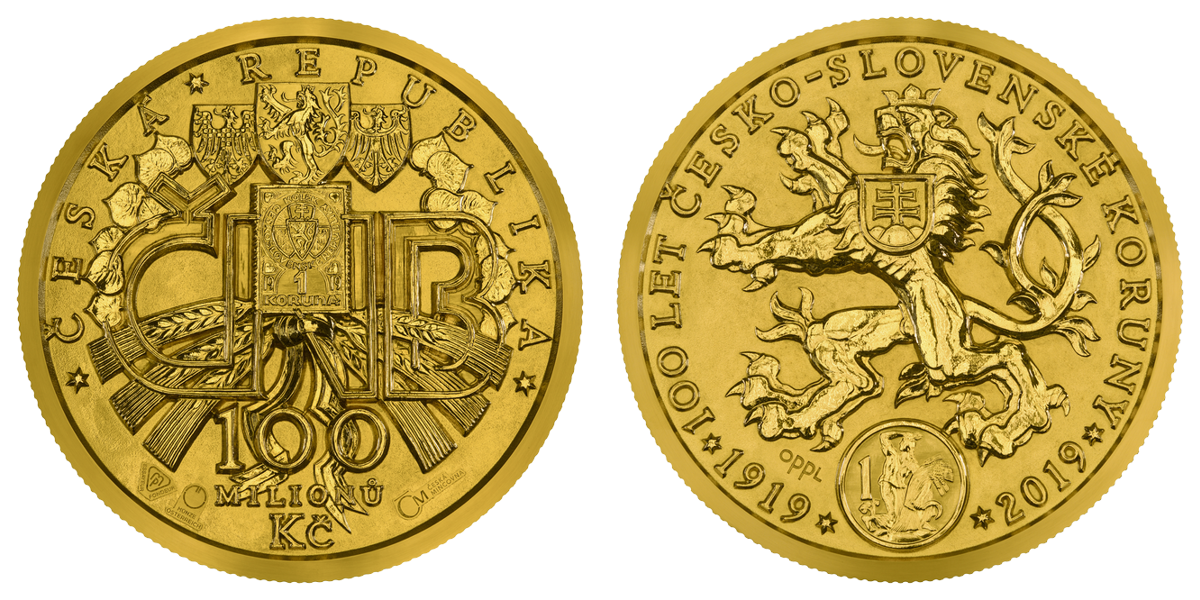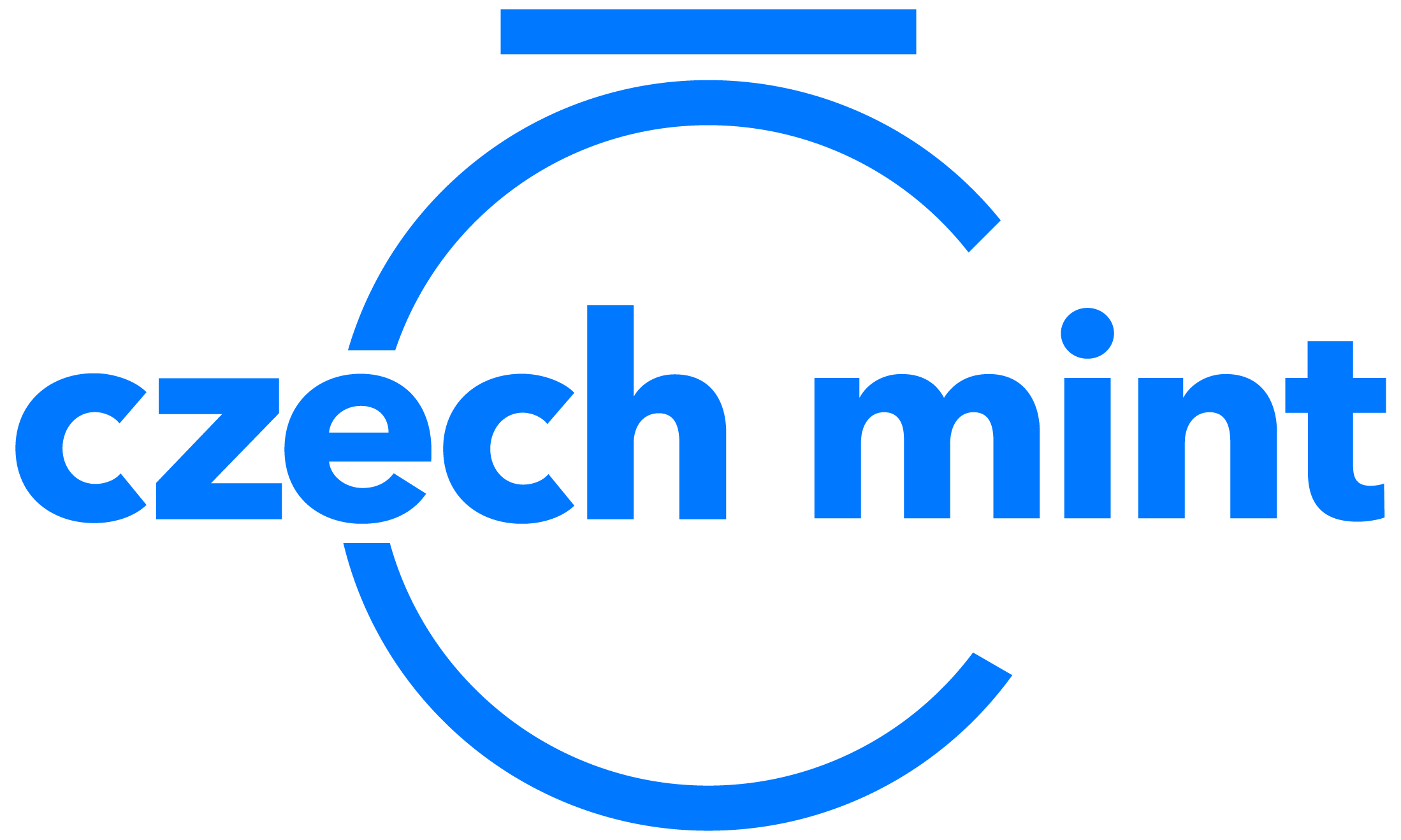Choosing a design
To select the artistic design of the coin, the Czech National Bank held an anonymous competitive process. Although most medal-makers are also sculptors used to creating larger works of art, managing the modelling and casting of plaster models 570 millimetres in diameter presented a formidable challenge. Fourteen artists took part in the competition and presented a total of twelve different designs. A commission consisting of specialists in minting, medal-making, numismatics, heraldry, sigillography, and production technology assessed the entries’ artistic merit, technical execution and thematic appropriateness.
First prize was awarded to the renowned sculptor Vladimír Oppl. On the obverse, the author has commemorated the creation of the Czechoslovak currency by depicting a validation stamp, which was used in 1919 by the Czechoslovak authorities to label the Austro-Hungarian banknotes, accompanied by the current logo of the Czech National Bank. The main feature of the reverse is a double-tailed lion accompanied by the motif of the best-known Czechoslovak coin from 1922.
Making a coin
The production of this massive coin, which commemorates the separation of the Czechoslovak monetary system from the Austro-Hungarian one after the Great War, was, symbolically, the joint work of the Czech Mint and the Austrian Mint – Münze Österreich. The coin was neither struck nor cast. The material used in its production weighed about 270 kilograms, about half of which was shaved off mechanically. The shavings, worth tens of millions of Czech crowns, did not, of course, go to waste. They were reprocessed.
The story of how this gigantic Czech coin came to be made is told by the Production Direction of the Czech Mint Stanislav Bachtík:
“You don’t say no to a commission like that. When we won the competitive tender held by the Czech National Bank, it was an enormous challenge for us, but, above all, it was a great honour. It also meant having to produce the coin on time and to the required standard. Right at the beginning, we decided not to use the mould casting method – we were short on time, and it would have been too expensive and demanding. On top of that, all wastage of gold during the production process was at the expense of the Czech Mint – the Czech National Bank provided only a quantity of gold equivalent to the weight of the final product.
We chose a process in which, as the first step, a gold disc would be cast. That disc would then be milled into the final shape, and the coin would then be cleaned with metal-working tools and burnished to give it its final appearance.
Not all these steps could be carried out at our works in Jablonec nad Nisou. The Swiss metal refinery Metalor was selected to carry out the casting, while the Austrian Mint was chosen for the machining process, as it has a centre specialising in that. Both companies met our security criteria. The design of the coin was provided by the sculptor Vladimír Oppl in the form of two plaster models. The models had to be laser-scanned and digitally enhanced to attain the final form. There were problems with that – the plaster models were too big to fit into the laser-scanner. They had to be cut into separate pieces and then “sewn together” again by a computer.
To be on the safe side, we had two gold discs cast. Trial milling was carried out on plastic, and several times the details and depths of the relief were altered. The final prototype was milled in copper on a scale of one to one. Part of the relief was then, as an experiment, milled on a large cube of gold, to find out how the material would behave. We thought we were doing well, and had started to mill one of the gold discs, when we discovered that the gold was of poor quality – it contained a lot of bubbles and pores. Fortunately, the second disc was of better quality, so we could complete the milling process. That process required a total of 181 hours of machine work.
Our engravers and die polishers then displayed their incredible skill, patience and dedication, for which they deserve a massive “thank you”. We tidied up the traces of the machining work. Selected parts of the coin were given a shiny finish, while the background areas below the rich relief were given a matt or grainy finish to let the shiny areas stand out. Here at Jablonec nad Nisou, we spent more than five hundred hours working on our “Tiny”. Christmas was put on hold, and we even worked on New Year’s Eve.

 čeština
čeština
 slovenčina
slovenčina
 english
english
